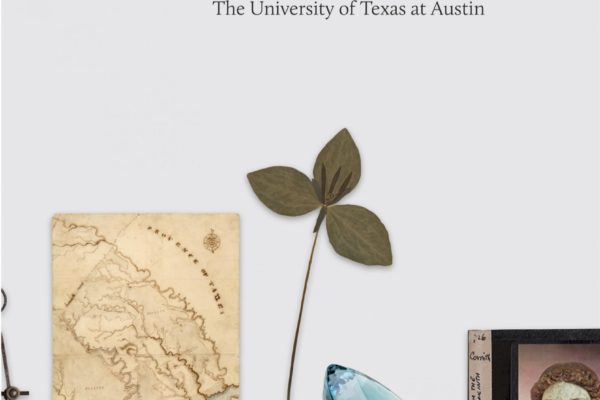AUSTIN, Texas — The University of Texas at Austin has released a digital edition of The Collections, the first encyclopedic account of the university’s repository of cultural artifacts. With more than 170 million objects, the university outpaces the largest collections in America and rivals many in variety and importance. The full 720-page volume is published at thecollections.utexas.edu. Available for free download, the broad distribution of the e-book and searchable PDF enables worldwide access to the university’s distinguished collections.

“This is the first time a publication of this kind has been produced by a public university,” said Andrée Bober, the book’s editor and director of the university’s public art program, Landmarks. “By making it available for free and online, we are putting the collection before a greater public. It’s our hope that this digital edition will increase awareness of these materials and inspire other universities to make their collections known.”
The book, released in print in January 2016, spotlights more than 80 collections — some familiar and others virtually unknown outside their fields of research — acquired since the university’s inauguration in 1883. It reveals the scale and diversity of the holdings by bringing these materials together for the first time, offering a new perspective on collections at public universities. The Collections offers an account of all the university’s irreplaceable artifacts, introducing each collection by outlining its history, highlighting its strengths and suggesting its educational function.
Highlighting materials held by some 40 academic and administrative units, The Collections covers a radical range of subjects — archaeology, ethnography, fine and performing arts, rare books and manuscripts, decorative arts, photography, film, music, popular and material culture, regional and political history, natural history, science and technology – providing insights on the formation of collections at institutions of higher learning.

“The University of Texas at Austin is built on the core values of learning, expanding understanding, and creating knowledge. Celebrating the material holdings that support its mission, this book offers a chronicle of creativity and discovery fostered by the collections,” Gregory L. Fenves, president of the university, states in his foreword.
Bober conceived this survey and organized more than 350 individuals to lend their expertise. She writes in the introduction: “Coming to understand the richness of Austin’s collections while working closely with so many people who share a passion for them has been an enormous privilege. I believe this book, whatever its lacunae, speaks eloquently to the university’s collecting strengths and the resources for scholarship and study that are publicly available.”
Included is a historical introduction by Lewis Gould, professor emeritus of American history. His essay traces the formation of the collections and acknowledges many people whose visions are manifest in these material resources.
For more information about the book, please visit the UT Press website.




